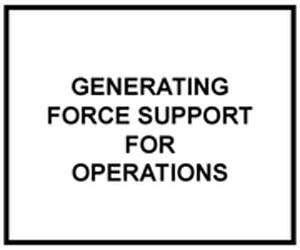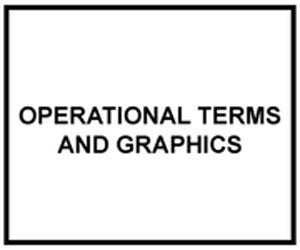
FM 3-07: STABILITY OPERATIONS
Official US Army Field Manual in Acrobat PDF file format.
Field Manual (FM) 3-07 is the Army’s keystone doctrinal publication for stability operations. FM 3-07 presents overarching doctrinal guidance and direction for conducting stability operations, setting the foundation for developing other fundamentals and tactics, techniques, and procedures detailed in subordinate field manuals. It also provides operational guidance for commanders and trainers at all echelons and forms the foundation for Army Training System curricula.
The six chapters that make up this edition of Stability Operations constitute the Army’s approach to the conduct of full spectrum operations in any environment across the spectrum of conflict. This doctrine focuses on achieving unity of effort through a comprehensive approach to stability operations, but remains consistent with, and supports the execution of, a broader “whole of government” approach as defined by the United States Government (USG). The core of this doctrine includes the following:
• Chapter 1 describes the strategic context that frames the Army’s comprehensive approach to stability operations. It includes discussion of the strategic environment, USG strategy and policy, and interagency efforts to define an integrated approach to stability operations that leverages the collective efforts of a wide array of actors toward a commonly understood and recognized end state.
• Chapter 2 links full spectrum operations to broader efforts aiming to achieve stability, emphasizing the simultaneous nature of offensive, defensive, and stability tasks. It describes the phasing paradigm that defines stability operations activities conducted before, during, and after combat operations. Finally, the chapter links the primary stability tasks with broader interagency stability sectors to provide the foundation for civil-military integration at the tactical level.
• Chapter 3 addresses the essential stability tasks that comprise military stability operations. It provides a detailed discussion of each of the five primary stability tasks, and describes the subordinate tasks that constitute the range of activities in stability operations. It includes doctrine that describes the role of civil affairs forces in stability operations as the commander’s conduit for civil-military integration. Finally, it describes development of mission-essential and directed task list development to support stability operations.
• Chapter 4 discusses the fundamental principles of the detailed component of planning, focused on the stability element of full spectrum operations. It builds on the precepts established in FMs 3-0 and 5-0, providing a systemic approach to planning and assessing stability operations.
• Chapter 5 addresses transitional military authority and provides doctrine concerning command responsibility, establishment, and organization of military government to support stability operations. It includes principles for establishing judicial structures to enable transitional military authority.
• Chapter 6 provides the doctrinal foundation for security sector reform, and introduces security force assistance as the capacity-building activity that encompasses organizing, training, equipping, rebuilding, and advising host-nation security forces. It also sets disarmament, demobilization, and reintegration as a fundamental element of security sector reform.
Seven appendixes complement the body of the manual.
Army doctrine is consistent and compatible with joint doctrine. FM 3-07 links stability operations doctrine to joint operations doctrine as expressed in joint doctrinal publications, specifically, Joint Publication (JP) 3-0 and JP 5-0. FM 3-07 expands on the fundamental principles of operations expressed in FM 3-0 and links those principles to a comprehensive approach to stability operations within the framework of full spectrum operations. FM 3-07 also uses text and concepts developed in conjunction with North Atlantic Treaty Organization partners.
File download size: 8 MB



